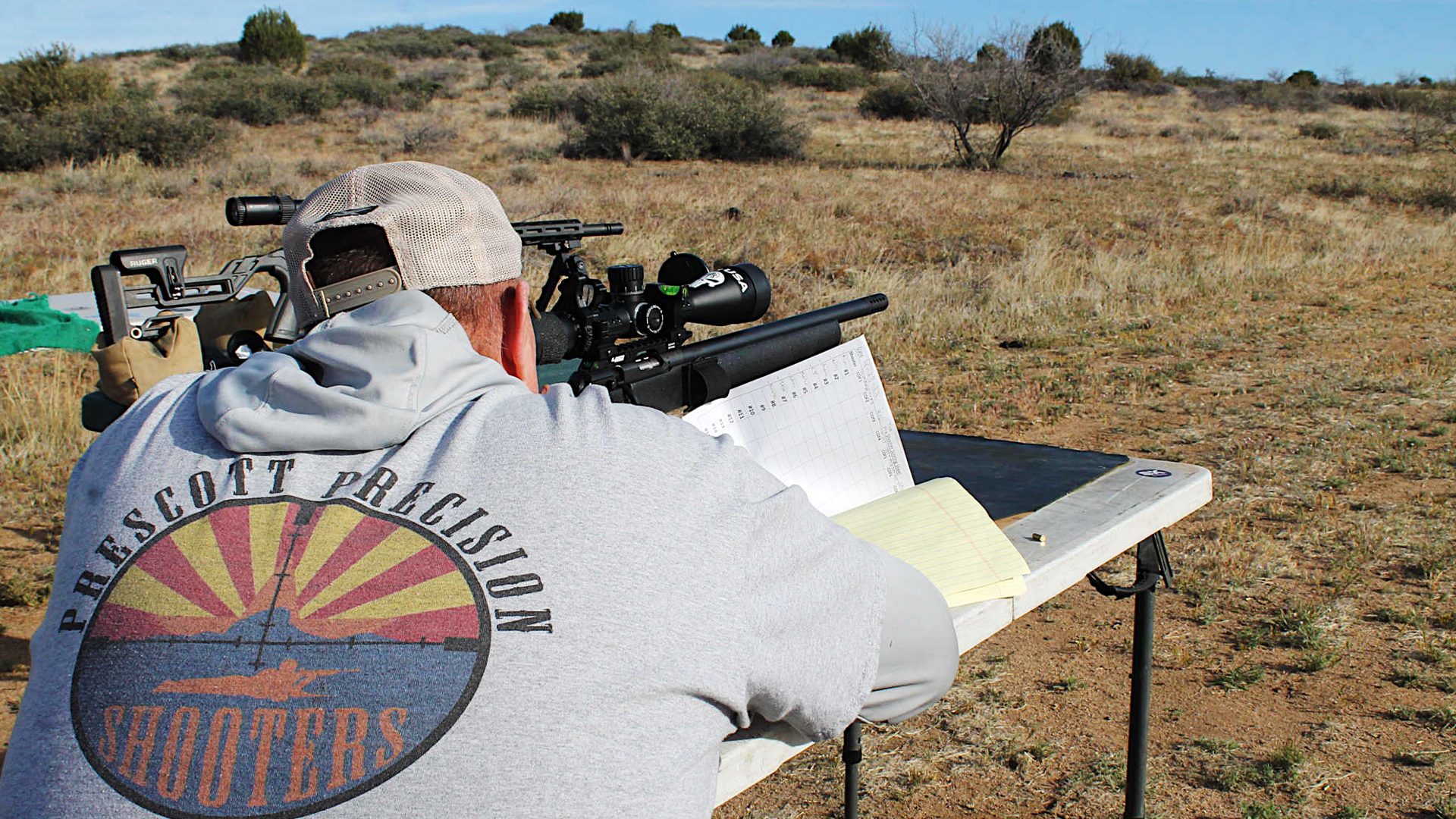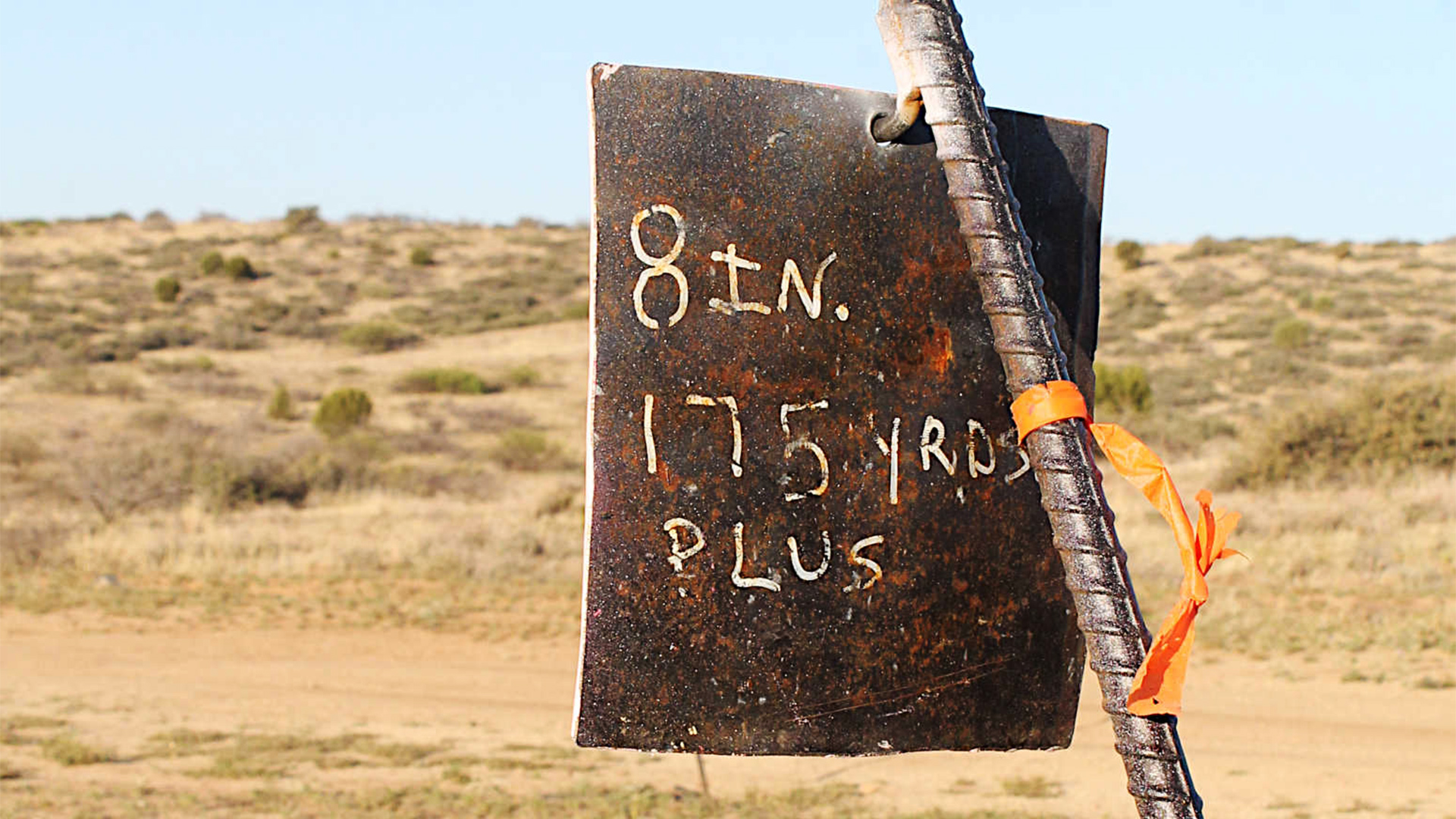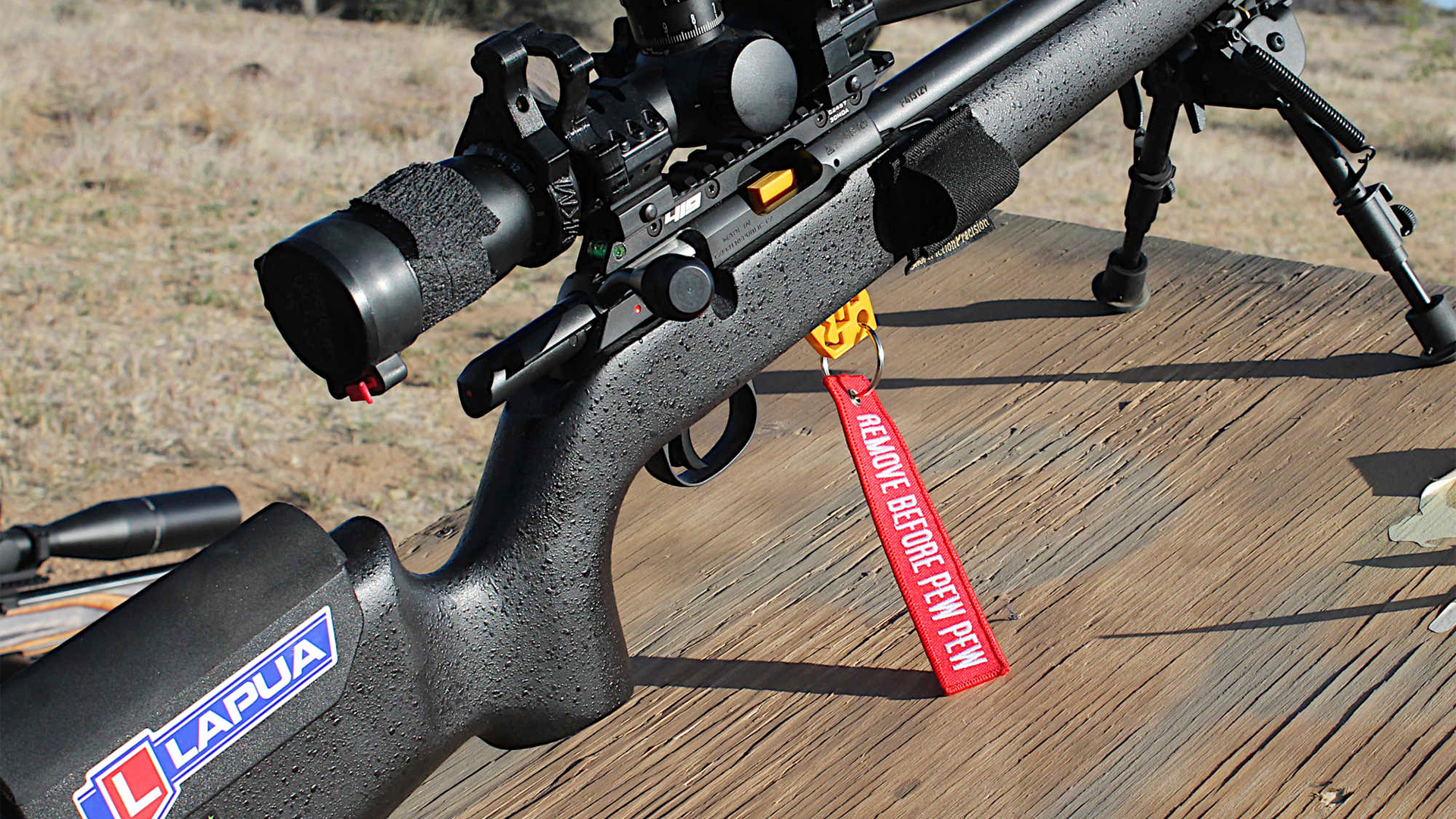
“Shooter ready?”
“Shooter ready!”
“Spotter up!”
“Go!”
On this particular day, the first stage consisted of two small steel plates hanging at 300 and 296 yards. A new shooter, who had never fired her .22 beyond 50 yards, rang the 300-yarder on her third shot from a borrowed rifle under Shane’s coaching, prompting a spontaneous cheer from the group. Imagine that: A newbie who had never competed before, using an unfamiliar rifle, hitting a target at 300 yards with a rimfire.
Yeah, she got hooked.

Competitive shooting doesn’t have to be expensive, formal, regimented and rule-laden, and it’s a good bet that those factors keep many shooters away. If the goal is to have fun and include as many interested people as possible, another approach is the informal club shoot. Our Prescott Precision Shooters group of a dozen or so .22 shooters is so informal that we don’t have official club status—or a range, for that matter.
A place to shoot. That’s probably the number one obstacle to competition shooting—or even plinking. But lacking a dedicated range, there is a venue for both: Public lands, such as National Forest and Bureau of Land Management lands. Arizona is blessed with wide open public lands that provide places to safely engage in target shooting miles away from any private or developed properties. Our spot is five miles down a dirt road on public land where we can set steel targets 300 yards (or more) from the shooting line to run our own tactical-style .22 LR competition once each month.

No Stress
All Prescott Precision Shooters (PPS) members agree that the major appeal of gathering to shoot together informally is the no-stress environment of the friendly competition. “Competition,” in fact, may be too strong a word. Everyone engages in ribbing, and we toss out more positive affirmations—“Nice shooting!” and “I know you can clean this stage!”—than you’ll hear at an optimists’ motivational speaking seminar.
“I love plinking with twenty-twos, but this is really a lot more fun because I’m challenged,” Kim said. “This is probably more fun than any other shooting I’ve ever done.”
“I really enjoy it,” said Jade, who also competes monthly in NRL 22 at Gunsite in Paulden, Arizona. “This is good hanging-out time.”
“I like coming out here to shoot with guys who shoot,” said Rob, a Navy veteran. “There are standards and rules, but you can relax and learn—not like being in the military.”
“I love the challenge of shooting at 300 yards,” said Mike. “I really appreciate Shane showing me how to do this. And I feel comfortable out here.”

How To Do It
Shane is inarguably the core of Prescott Precision Shooters. A retired Army sniper, Shane naturally moved into National Rifle League (NRL) precision shooting competition, and then into the rimfire version, NRL 22. But he wanted to shoot more often, more affordably and closer to home; after sounding out potential interest from friends and acquaintances, he launched Prescott Precision Shooters. From the beginning, Shane’s central focus has been to keep the game fun and affordable to attract more—and especially new—shooters.

To succeed, Shane said it’s important to make the game challenging, yet not so difficult that the less-skilled shooters and those with entry-level rifles and gear become discouraged. Participation goes beyond shooting to include setting up, spotting targets for each other and cleaning up. Shane encourages PPS members to create new shooting stage challenges; we’ve shot everything from matchsticks at 25 yards, to 12-inch steel plates 300 yards away across the windy chaparral, and make frequent use of ladders, chairs, buckets and 2x4 props.
In 2021, we added a stage of fire for iron sights only, a kind of “run what ya brung” like in drag racing, but for .22s. Several members bring out rifles of match or near-match quality for the iron sight stage, others just shoot whatever they happen to have. One PPS member shoots the Mossberg Model 144US featured here last year.

Fun Factors
Several factors keep the game affordable, beyond the cost of rifles and scopes. First, shooting on public land precludes range fees, though of course the safety of others nearby who may also be enjoying public land must be considered, as well as keeping the spot clean of trash. Additionally, PPS members typically shoot subsonic ammunition, so gunshot noise bothering others is not a factor.
Second, Shane is a machinist and metalworker, and he makes the steel targets and trailers them out to the shooting spot. The small match fee gleaned from each shooter pays for costs associated with making, maintaining and transporting the targets.

Third, many of the shooting stages are such that scoring hits at less than 100 yards is do-able with ordinary rifles and scopes, giving those with entry-level gear plenty of success. “Some folks show up with Grandpa’s lever gun with iron sights, and that’s fine out to a hundred yards,” Shane said, “but any farther than that requires upgrading.” Many PPS members started off with entry-level rifles and gear, and have so enjoyed the game and the gatherings that nearly all have since upgraded to match-quality rifles and optics. Most rifles are semi-automatic Ruger 10/22s or precision clones, and Vortex scopes are prevalent. You’ll often see shooters whip out their smartphones to check their ballistic apps when the wind and temperature rises as the morning progresses.
Other Benefits
While the number of new gun owners increased an estimated five to seven million the past two years, there has been no corresponding great increase reported in the number of formal competitive shooters. Why is competitive shooting important? Beyond the fun factor and individual benefits of mental and physical conditioning, it gets and keeps gun owners shooting. The social aspect keeps shooters connected, which is especially important during this time of intensive political assault on our civil rights. Informal competition benefits the same manufacturers and providers of guns and gear as does formal competition, because informal competitors buy for the same reasons that formal competitors buy—to shoot better. And informal competition is a natural lead-in to formal competition for the masses, like NRA Smallbore, High Power, Silhouette and the rest—it can grow the sport.

As Prescott Precision Shooters demonstrates, all that’s really needed to enjoy competition is a place to shoot and at least one individual willing to be the organizer and motivator. Fun, affordable, accessible—meet these three requirements, and they will come.



































